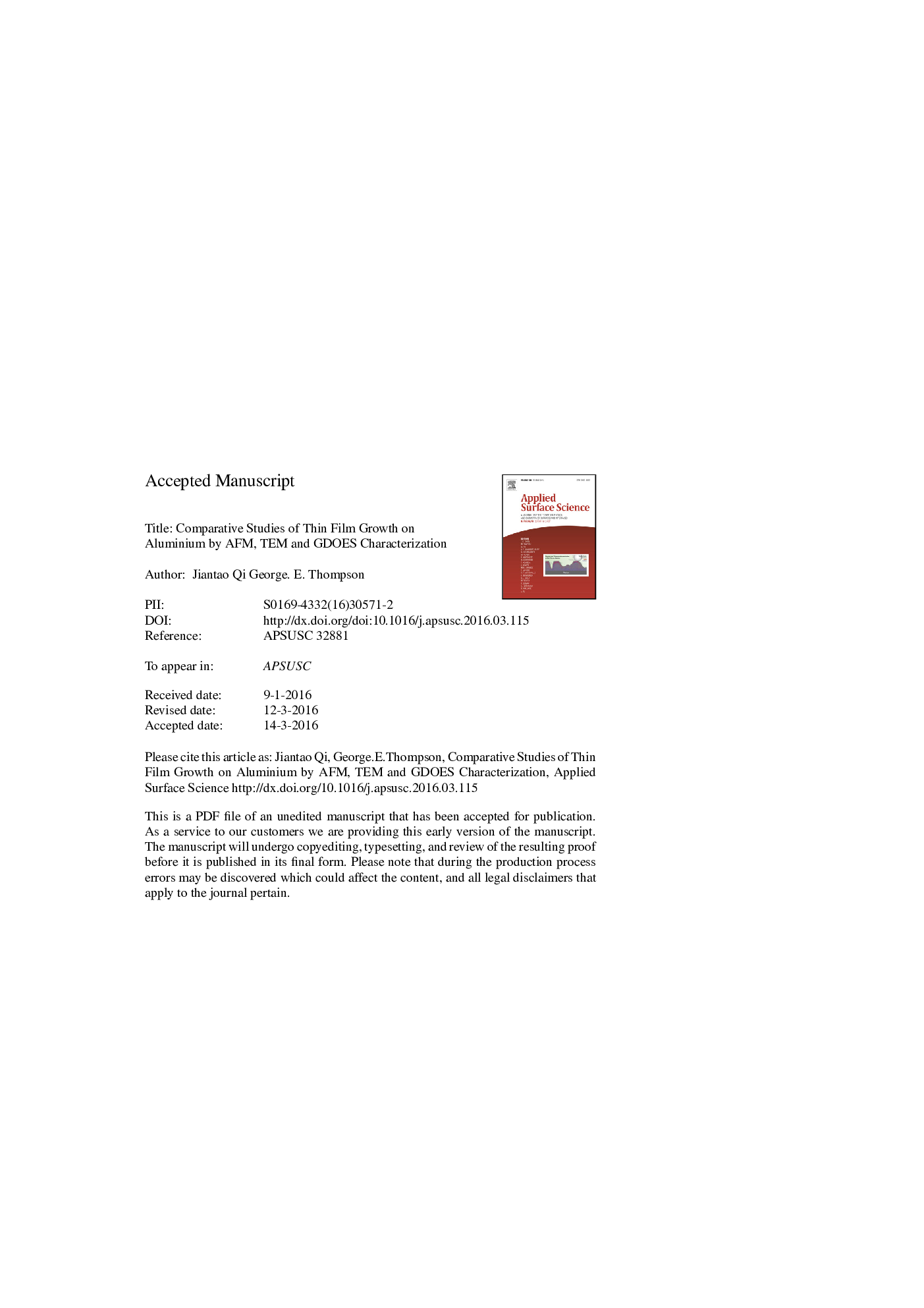| Article ID | Journal | Published Year | Pages | File Type |
|---|---|---|---|---|
| 5348757 | Applied Surface Science | 2016 | 35 Pages |
Abstract
In this present study, comparative studies of trivalent chromium conversion coating formation, associated with aluminium dissolution process, have been investigated using atomic force microscopy (AFM), transmission electron microscopy (TEM) and glow-discharge optical emission spectroscopy (GDOES). High-resolution electron micrographs revealed the evident and uniform coating initiation on the whole surface after conversion treatment for only 30 s, although a network of metal ridges was created by HF etching pre-treatment. In terms of conversion treatment process on electropolished aluminium, constant kinetics of coating growth, â¼0.30 ± 0.2 nm/s, were found after the prolonged conversion treatment for 600 s. The availability of electrolyte anions for coating deposition determined the growth process. Simultaneously, a proceeding process of aluminium dissolution during conversion treatment, of â¼0.11 ± 0.02 nm/s, was found for the first time, indicating constant kinetics of anodic reactions. The distinct process of aluminium consumption was assigned with loss of corrosion protection of the deposited coating material as evidenced in the electrochemical impedance spectroscopy. Based on the present data, a new mechanism of coating growth on aluminium was proposed, and it consisted of an activation period (0-30 s), a linear growth period (0.30 nm/s, up for 600 s) and limited growth period (0.17 nm/s, 600-1200 s). In addition, the air-drying post-treatment and a high-vacuum environment in the microscope revealed a coating shrinkage, especially in the coatings after conversion treatments for longer time.
Keywords
Related Topics
Physical Sciences and Engineering
Chemistry
Physical and Theoretical Chemistry
Authors
Jiantao Qi, George E. Thompson,
